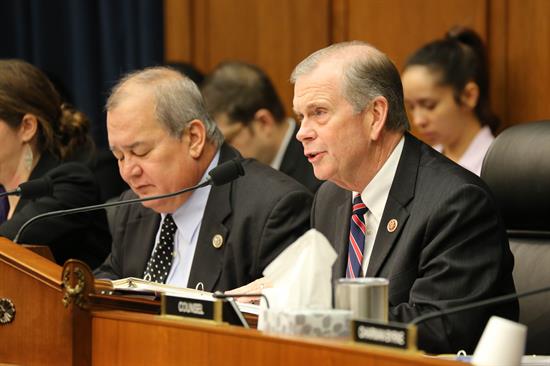Good morning, and welcome to today’s joint subcommittee hearing with the Subcommittee on Workforce Protections. I’d like to thank our witnesses for joining us for this important discussion on how the opioid epidemic is impacting workplaces, workers, and families cross this country.
The tragic opioid epidemic has unfortunately become a major part of our national conversation, and a problem that we must understand and address.
Too many Americans – from all walks of life and from all parts of the country – are facing the terrifying realities of opioid abuse, and far too many are dying from opioid misuse and overdose every day.
According to the Centers for Disease Control and Prevention, opioid use (including prescription opioids, heroin, and fentanyl) was the cause of over 42,000 deaths in 2016, 40 percent of which involved a prescription.
As policymakers, we need these statistics to inform what we do. But it’s most important to remember that every casualty was a person with incredible potential.
Not only were they members of our larger social communities, they were members of our work communities.
Our coworkers see more of us during the average day than even our own families. The people we see in the workplace have a significant role in each of our lives, and are part of the community around us.
Many Americans work alongside those who suffer from opioid misuse, but may not understand what can be done to help their fellow coworker.
According to the National Council on Alcohol and Drug Dependence, 70 percent of the 14.8 million individuals that are misusing drugs, including opioids, are currently employed.
While this statistic is alarming, it also shows the workplace can be a resource for the community to identify those who are struggling with opioid misuse. And, we are already seeing some employers assisting employees in their treatment and rehabilitation.
Already, many employers have deemed it necessary to update or promote existing policies to provide support to employees who struggle with opioid abuse.
In fact, 70 percent of U.S. companies and 90 percent of Fortune 500 companies have an employee assistance program to assist employees struggling with substance abuse and other problems.
It is reassuring to see these kinds of programs and practices implemented by companies who want to see their employees healthy and productive. But more needs to be done.
While much of the current dialog is about the dangers of the opioid epidemic, we also need to hear about the proactive steps employers are taking to fight this epidemic within their workplaces and the broader community.
That brings us to today’s discussion of how the opioid epidemic is impacting American workers and what some employers are doing to address this problem.
We must understand that the federal government must not act as a barrier or tie the hands of employers when it comes to addressing opioid abuse and the workplace. Rather, we should fortify employers’ efforts to help their employees and family members, who are affected by this epidemic.
I look forward to hearing from our witnesses today, and thank Chairman Byrne for co-chairing this important joint subcommittee hearing.
To read the PDF version, click here.
# # #

